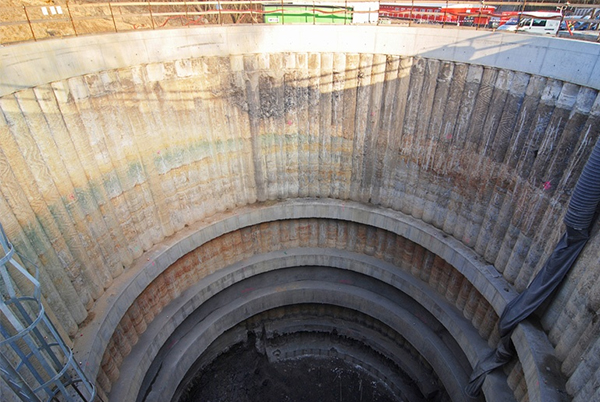Rockwheels in Secant Shaft Construction

For construction of larger diameter shafts through unstable soils, the use of interlocking hard / soft CFA (continuous flight auger) piles is a highly cost effective method of shaft sinking.  Rockwheel Americas' rock & concrete grinders are often an important tool in these projects.
Rockwheel Americas' rock & concrete grinders are often an important tool in these projects.
Constructing a shaft typically involves five main stages:
1) Piles are drilled to required depth to form a continuous wall for the shaft. Piles are formed by drilling to the required depth using a hollow stem continuous flight auger. After reaching the designed depth, a concrete is then pumped through the hollow stem. While the concrete is being pumped, the auger is withdrawn at a controlled rate, removing the soil and forming a shaft of concrete. Overlapping concrete columns form the supporting shaft wall.
2) A ring of reinforced concrete is constructed around the top of the shaft to support the shaft wall.
3) Once the outer frame is in place, the main shaft is excavated out with the material lifted to the surface.
4) Shaft excavation is stopped at specific depths to construct reinforced concrete or steel support rings. For water proofing or installation of support rings, the shaft wall must be ground smooth. Alpine’s excavator mounted rock and concrete grinders are an ideal tool for rapid and precise concrete grinding. The Alpine grinders can be installed in place of the bucket on the excavator being used to dig out the shaft.
5) Excavation is then completed to the required depth and a steel reinforced concrete slab is constructed at the base of the shaft.
We have a wide range of Rockwheel sizes allowing the grinding attachment to be utilized on excavators of any size from 1.5-ton minis to 50+ ton heavy excavators.
